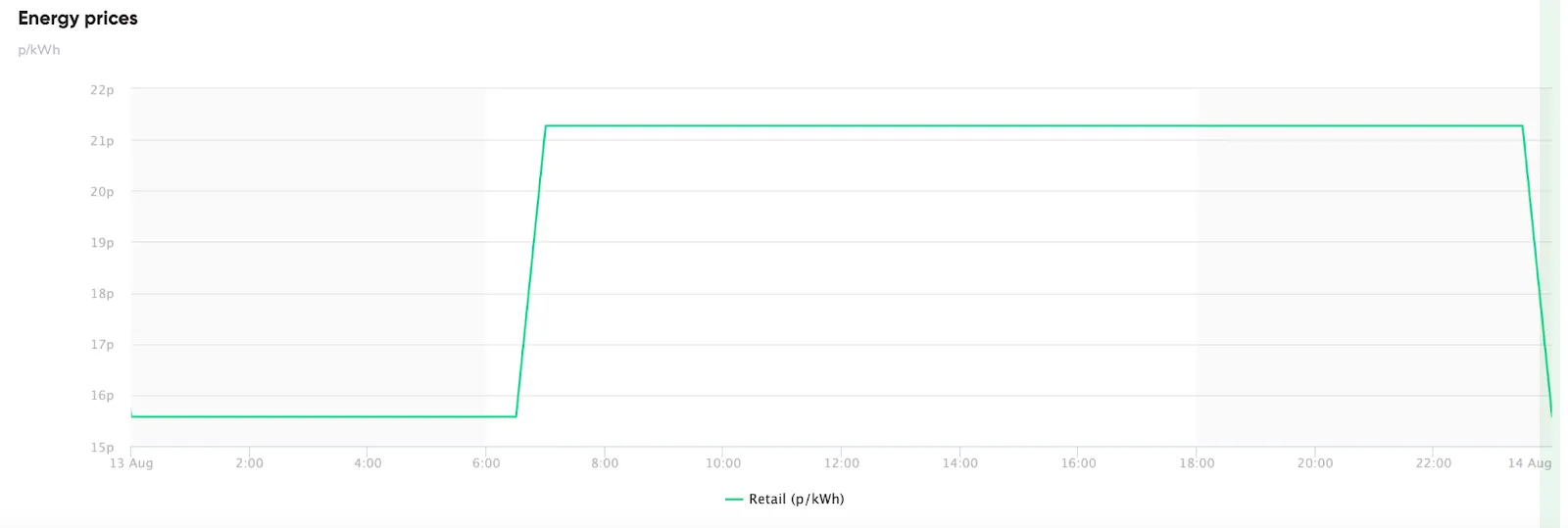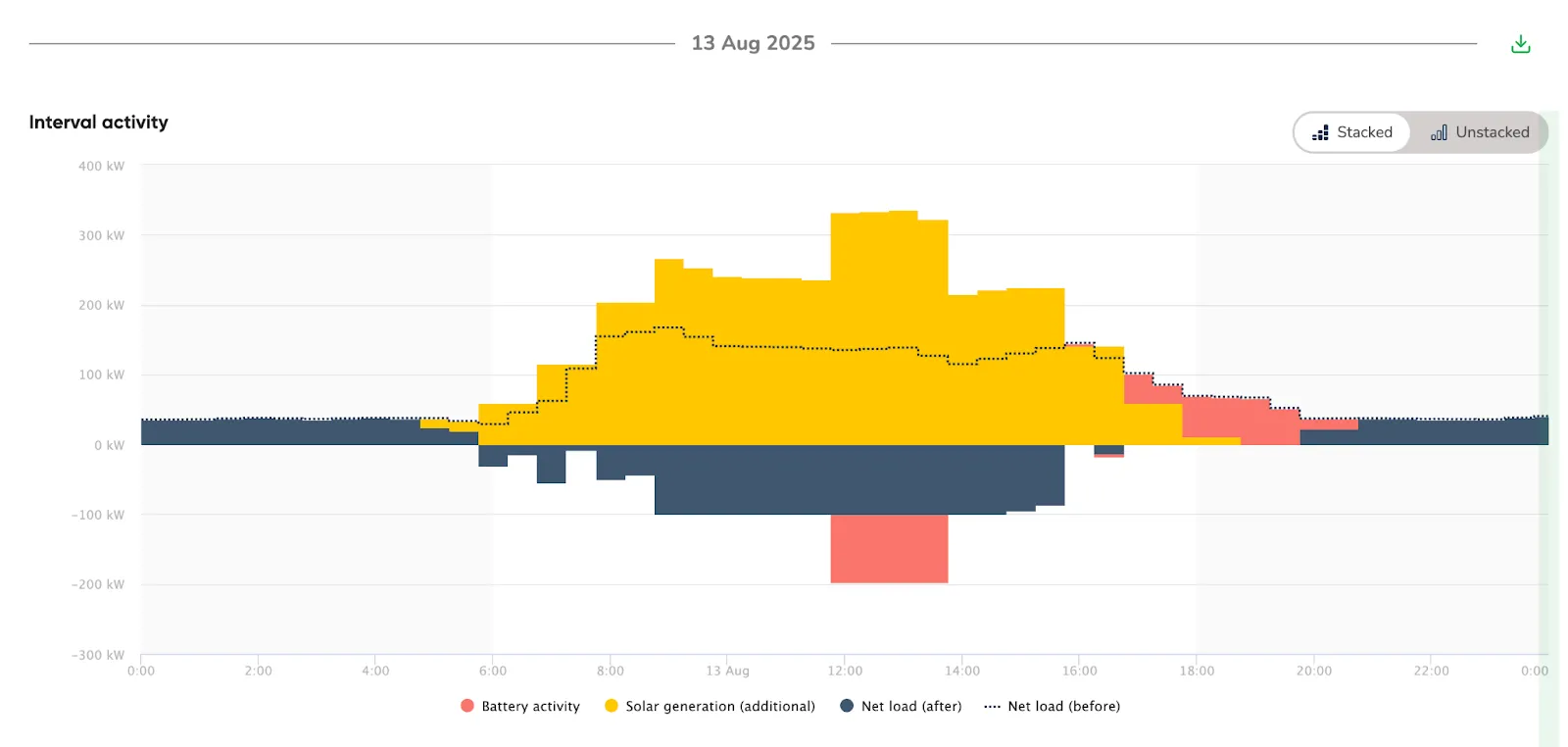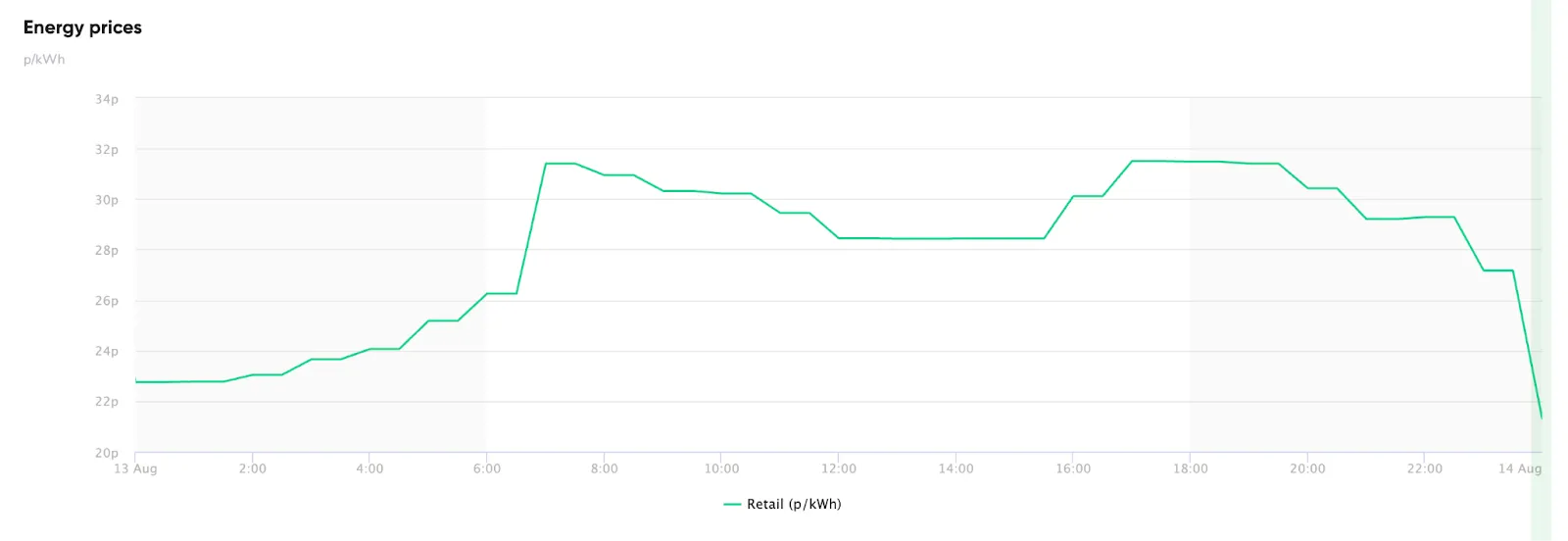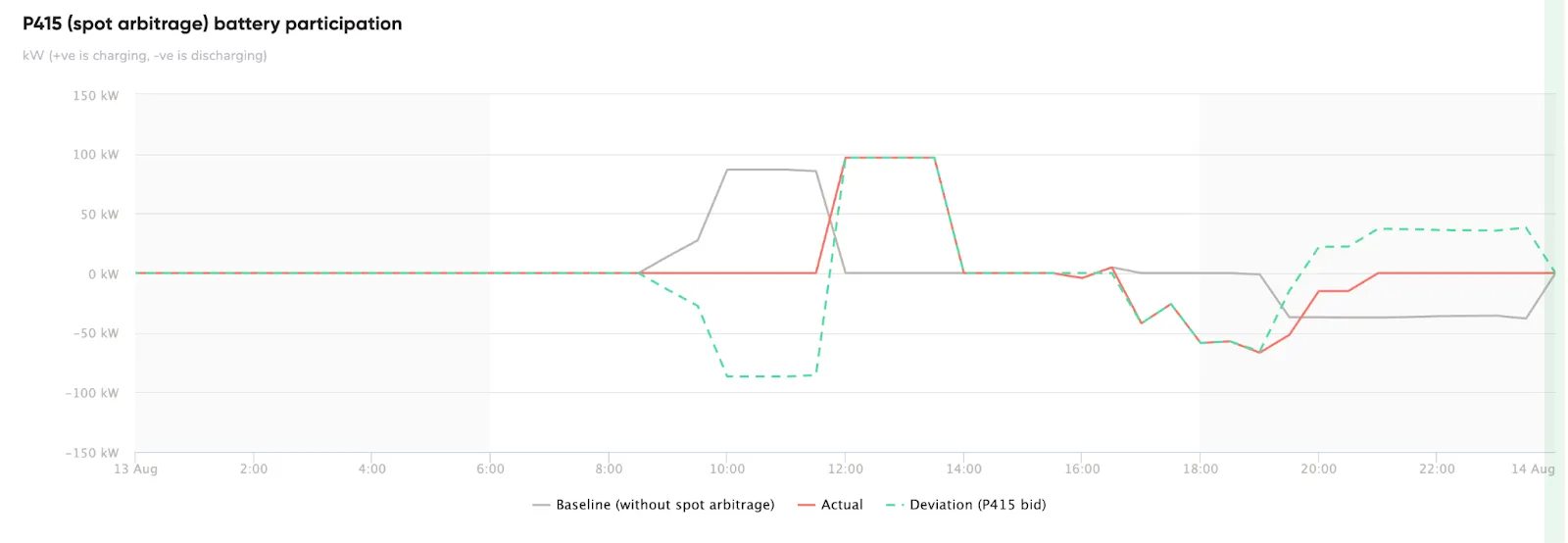Blog /
Industry Insights
P415 Baselining and Deviation Volumes: Part 2
August 14, 2025
.webp)
P415 Technical Deep Dive: Baselining and Deviation Volumes - The Devil in the Detail
This blog is part of a multi-part series that unpacks in detail the P415 rule change in the UK, and how it is managed in Orkestra. Read Part 1 here.
In Part 1 of our P415 blog series we explored the regulation's commercial impact and found it adds meaningful but modest value to UK commercial battery projects. We also discovered that tariff optimisation often matters more than P415 itself.
But to truly understand P415's potential for your projects, you need to grasp the technical mechanics that determine this value. This blog focuses on the critical concepts of baselining and deviation volumes - the technical foundation that makes or breaks P415's financial impact. We will then examine how baselines are implemented for batteries, specifically in Orkestra.
What Are Deviation Volumes?
Deviation volumes are the heart of P415. They represent the difference between what your battery does normally versus what it does when exposed to wholesale market opportunities. This difference is literally what you can trade for additional revenue.
Here's the three-step process for calculating deviation volumes:
- Determine baseline activity: What the battery would do without wholesale market exposure (optimizing only for existing tariffs, solar self-consumption, demand management)
- Determine actual activity: What the battery does when wholesale market signals are available
Calculate deviation volumes: Actual activity minus baseline activity (measured in kW)
The critical insight: Only the deviation volumes can be traded through P415. If your battery's behaviour doesn't change when wholesale markets become available, your deviation volumes are zero - meaning no additional P415 revenue.
Visualising Deviation Volumes in Practice
Let's walk through a real example using the same commercial site from Part 1: a 100kW battery with a 500kW solar system.
Baseline Scenario (Without P415)
In the baseline case, the battery charges with excess solar generation to capture export tariff value and discharges in the afternoon to avoid peak charges. This represents standard time-of-use optimisation.
View the full baseline analysis in Orkestra


Optimised Control Incorporating P415 Market Access
When wholesale market signals are available, the battery's optimal strategy changes. Instead of charging immediately with solar excess, it waits to charge when wholesale prices drop after midday. The opportunity cost shifts from the export tariff rate to the wholesale market price.
Note that for simplicity, the prices of the day-ahead wholesale market and retail tariff have been combined on the chart below. In reality, these are separate price signals for the battery.
View the full P415-optimized analysis in Orkestra


The Deviation Volumes Result
When we compare these scenarios in the chart below:
- Grey line: Baseline battery activity (This is what the battery would have done to capture value had it not been exposed to the wholesale market)
- Red line: Actual battery activity when the battery is additionally being controlled to capture value in the wholesale market.
- Green dotted line: Deviation volumes (the tradeable difference)
The capacity corresponding to each interval's deviation volume is what can be bid into wholesale markets through P415.

Understanding Positive and Negative Deviation Volumes
Deviation volumes can be positive or negative, depending on how the battery's behaviour changes:

Key insight: When the battery charges or discharges according to baseline anyway, P415 provides no additional benefit. This reinforces why tariff optimization should come first.
Battery Baselining Approach: Why Standard Methods Don't Work
As outlined above, baselining is a key requirement for P415, as a key input into determining how much capacity (i.e. kW of load or battery) can be bid into the market.
The Balancing and Settlement Code (BSC) that regulates P415 provides different baselining methodologies.
The “standard approach” calculates baselines from historical data using similar days. However, this methodology is designed for predictable loads like industrial facilities with consistent consumption patterns.
For batteries, this historical approach isn’t suitable because battery dispatch is complex and responsive to multiple signals. Battery dispatch is complex and responsive to multiple simultaneous signals:
- Time-of-use tariff rates
- Solar generation patterns
- Demand charge optimization
- Site load requirements
- Now potentially wholesale market prices
To overcome this, batteries typically use the Submitted Expected Volume (SEV) approach, where the asset owner provides their own baseline that represents “good industry practice.”
Submitted Expected Volume (SEV) Approach
For the Submitted Expected Volume (SEV) approach, instead of looking backward at historical data, asset owners provide forward-looking baselines representing "good industry practice" - essentially optimal operation without wholesale market access.
Orkestra's SEV Baseline Calculation
Orkestra models P415 arrangements using a practical two-step SEV process:
- Baseline calculation: First, the optimisation runs without wholesale market exposure enabled. This considers the battery’s controls, only taking into account factors such as time-of-use tariffs, solar self-consumption, and demand management
- Actual dispatch calculation: The optimisation runs again with wholesale market exposure enabled. This shows what the battery would do when it can also respond to wholesale market prices.
The resulting deviation volume is then calculated as the difference between these two dispatches that are traded in wholesale markets.
This methodology was discussed with and endorsed by Elexon as meeting the “good industry practice” requirement for Submitted Expected Volumes.
The baseline dispatch data, in kWh, is available in the exported time series data of the solution.
Implementing P415 Asset Meters in Orkestra
Orkestra automatically configures P415 asset meters when solutions meet specific criteria, streamlining the technical implementation process. P415 is enabled when all three conditions are met:
A. Location: Site is in Great Britain
B. Battery Control: Control profile includes
- "Energy Arbitrage (Wholesale)" (Optimisation option), OR
- "Wholesale price trigger" (Rules-based option)
C. Tariff Structure: Site retail tariff is not wholesale-exposed
- Wholesale-exposed tariffs have wholesale energy consumption rates and/or wholesale Feed-in-Tariff export rates
- If the site already faces wholesale prices directly, P415 isn't required
Implementation Process
When P415 configuration is required:
- Orkestra prompts you to select a wholesale-exposed tariff for the asset meter
- Use the default "wholesale exposed" tariff from the library
- Verify configuration by checking "Battery behind P415 asset meter" in the solution's "View all inputs" page
Important note: Orkestra considers both baseline tariffs and scenario tariff changes. If either exposes the site to wholesale prices, the software recognises P415 isn't needed.
Key Takeaways
Start with tariff optimisation: Better existing tariffs reduce P415's marginal benefit and often provide more value than P415 itself. Only layer P415 complexity after maximising existing value streams.
You must understand your baseline and deviation volumes: Understanding baselining and deviation volumes is crucial for accurately assessing P415's potential impact on your projects.
Model comprehensively: Use tools like Orkestra to compare different solar, battery, tariff and market participation scenarios, and quantify actual deviation volumes for your specific site conditions, load patterns, and tariff structures.
Balance complexity vs. returns: Additional P415 revenue must justify the operational and commercial complexity. Single market participation provides measurable but limited returns; multi-market approaches increase both value potential and project complexity.
Conclusion
P415 represents a useful additional revenue stream - but success requires understanding both the commercial opportunity from Part 1 and the technical foundation covered here in Part 2.
While the technical implementation of P415 can be simplified through Orkestra, the commercial success still depends on fundamental project characteristics, and will come down to comprehensive modelling to assess all your options.
Orkestra will enable you to accurately determine and compare the value of different solutions, and only then can you determine whether P415's additional complexity delivers sufficient additional value for your specific circumstances.
Ready to model P415 for your commercial battery projects? Orkestra enables you to assess P415's real-world impact on your specific sites with ease.
Access Leveraging VPP Value for Solar and Batteries
Watch our webinar with VPP Partners and Cornwall Insight
Access the webinar
